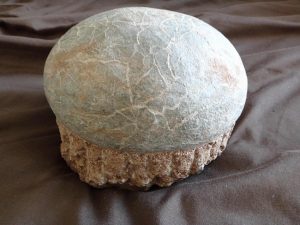Updated on: 28/03/2022
The Hadrosaurs were the members of the group Hadrosaurid that walked the planet during the Cretaceous Period (145 to 66 million years ago), with the type species being the Hadrosaurus foulkii. The ornithischian family of the Hadrosauridae got their ‘duck-billed’ nickname from the flat and very wide beak-like structure that grew from the front of the skull (head).
| Kingdom: | Animalia |
| Phylum: | Chordata |
| Clade: | Dinosauria |
| Order: | †Ornithischia |
| Suborder: | † Ornithopoda |
| Clade: | † Hadrosauromorpha |
| Family: | † Hadrosauridae |
| Pronunciation: | had-row-sawr |
| Geological Period: | Late Cretaceous Period |
| Size: | Members ranged between 10 and 40 feet (3 to 12 m) in by height |
| Length: | 39.4 feet (one of the largest, Mongolian species) |
| Weight: | Around 3 tons |
| Average Lifespan: | About 25 years (average) |
| Location/Distribution & Habitat: | In varying locations, but mostly in the grasslands of North America, Europe, and Asia |
| Climate/Environment: | Moderate to warm |
| Diet: | Herbivorous |
| Birth Type (Reproduction): | Oviparous |
| Locomotion: | Both bipedal and quadruped |
In 1978, fifteen young hadrosaur fossils were found in Montana, along with their eggshells, and of the same age and almost the same size, which made the scientists believe that these were nestlings.
It was in 1999 that one of the complete specimens of the Hadrosaurs was unearthed in North Dakota’s Hell Creek Formation, and was hence named as ‘Dakota’. Accordingly, the family Hadrosauridae had been divided into two categories: those that had a hollow cranial crest, and those without it.
In fact, the fossil of this specimen was preserved so well that it let the paleontologists study the features, including a very dense muscle mass. This feature gave it the ability to surpass even many other predatory animals of the period.
This specimen had also revealed evident information regarding the entire hadrosaur family in general about the fact that they were probably longer in size and more flexible than previously envisioned.
Skin impressions of other hadrosaurs, including Lambeosaurus magnicristatus, Lambeosaurus lambei, Saurolophus osborni, Edmontosaurus annectens, Corythosaurus casuarius, Saurolophus angustirostris, Gryposaurus notabilis, Parasaurolophus walkeri, and Brachylophosaurus canadensis have also been found in the contemporary period.
The physical characteristics of the creatures belonging to the Hadrosaur group varied between species. The most outstanding feature of the anatomy of the hadrosaurs was the rostral bones that were flattened and laterally stretched, giving them the unique duck-bill look.
Some of the members of this group had huge crests on their forehead that was meant for a display to ward off enemies and predators, and/or for a show during mating. The individual fossil was found in the late nineteenth century, not merely with the skin but also tendons, ligaments, as well as some mummified internal organs.
The entire fossil is being scrutinized under the Boeing Company’s CT scanner, the largest of its kind in the world used to detect flaws in engines used in space shuttles, and various other machinery of the type. While the studies are still on, scientists believe, this will help them learn about the entire genus more scrupulously.
Interestingly, there has a gap of approximately 1 cm between each of its vertebra, which indicates that there are high chances of the presence of a skeletal structure between each of them. Such a feature would allow even more flexibility to the creatures. This further suggests that, the giant reptile was even longer than it is shown in the museum.
The discovery of fossilized nests and even young hadrosaurs and the hatchlings signify that these animals displayed parental care and attended their babies. They were entirely herbivorous, and had a flattened snout with the beak tip being adapted to nip off vegetation for consumption including the contemporary plant species like ancient conifers, oaks, beeches, lilies, members of the rose family, as well as horsetails, ginkgos, and cycads.
Several fossils of the hadrosaurs’ teeth helped scientists study the nature of diet of these herbivores. Many of the members also had sets of hundreds of teeth arranged into batteries for the purpose of chewing foodstuffs. The shape of the teeth also suggested that these creatures depended more on the tender plant matters like leaves and shoots, rather than toughie ones like the branches and twigs.
The discovery of several well-preserved communal nests made the researchers speculate that the hadrosaurs may have the migrating behavior to nesting grounds in order to reproduce. This behavior is particularly seen in many species of modern day birds.
